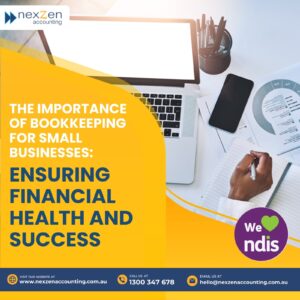At some point, every successful small business owner needs to expand the team. Choosing the right person is essential, but first you must decide whether to hire a contractor or an employee.
There are benefits with both options, but there are also downsides to consider. The choice you make could possibly affect your business long-term, so let’s take a moment to review your options. Employee vs. contractor: which one is best for your business?
What Is an Employee?
First, let’s cover the basics: What is an employee?
An employee is part of your organisation. They not only provide services or work for your business; they are part of the team. In Australia, law requires organisations to pay employees on a fixed, regular basis and provide paid leave. There are also different tax laws and superannuation laws for employees vs. contractors.
What Is a Contractor?
Unlike employees, contractors are not actually part of your organisation. Contractors are actually their own entity, and they sell their services to other organisations. Some contractors may not consider themselves business owners, but the distinction is still there. Contractors should also have their own Australian Business Number (ABN).
Contractors are also called independent contractors or subcontractors. They usually have their own work requirements and guidelines they set themselves. This means they may set their own work hours, use their own tools and follow their own methods to perform their services. They may also set their own fees and work for more than one organisation at once.
While contractors have certain legal rights, they are usually responsible for their own taxes, insurance, superannuation and other benefits.
Employee vs. Contractor: Pros and Cons
At one point, “employee” was the default work status. If an organisation needed to expand its workforce, they simply hired an employee. Today, though, more and more businesses are choosing contractors. In fact, research shows that over one-third of Australians work as contractors. That doesn’t even include people who work as contractors in addition to full-time employment. If you choose to hire a contractor vs. an employee, you may have plenty of options. However, there are pros and cons to consider first.
Contractor Pros
A Contractor May Be the Cheaper Option
Though contractors often charge more per hour than a salary or wage employee, the overall cost is often less expensive. You can pay a contractor as-needed and you won’t need to pay for taxes or benefits.
A Contractor May Give You Flexibility
As mentioned above, you can hire contractors when you need them. If your practice is short-staffed or experiencing a sudden rush of patients, hire a few contractors to get you through the period. When things slow down again, reduce your workforce with minimal hassle.
A Contractor May Provide Services You Can’t Find Elsewhere
Employees often need training. Most employees work for one organisation for years before moving to another. Contractors, however, usually work for multiple clients at once and they gain a lot more experience. Most contractors can start work immediately with little training and may provide additional services or specific knowledge you can’t find elsewhere.
A Contractor Requires Little Oversight
In the early days, employees often require extensive management until they become familiar with the job. Contractors are professionals who usually require little training. This frees up your time for other tasks.
Contractor Cons
A Contractor May Not Feel Loyal to Your Organisation
Contractors primarily work for themselves. Though you can certainly build a relationship with a contractor, that takes time. They likely won’t feel immediate loyalty or dedication to your practice.
A Contractor Is Their Own Authority
While you may provide guidance, limitations and deadlines for their services, contractors answer primarily to themselves. You may not like the way they do things, the schedule they set for themselves or their communication styles.
Employee Pros
Employees Become Part of Your Team
While contractors work for themselves, employees are part of your team. If you want to build a workforce of reliable, dedicated team members, employees are the better option.
Employees May Be There When You Need Them
Most employees are ready when you need them. If you suddenly find yourself with a large workload or too many employees call out, a full team of staff helps you find someone ASAP. A contractor may take a bit more time to find.
Employees Are Familiar With Your Practices
Employees require a bit more training, but they are also more familiar with your organisation. They know and understand your processes and how your practice operates.
Employees May Be More Loyal
When it comes to privacy, dedication and teamwork, employees often have the upper hand over contractors. Working for you is their primary job and they are more likely to protect your information and be there when you need them.
Employee Cons
Employees May Be the More Expensive Option
Employees cost much more than an hourly wage or salary. They also require taxes, insurance, superannuation and paid leave. Your employees will need their own tools and equipment to perform their duties and you may spend more on training and management as well. The expenses add up and are a large consideration for most small business owners.
You May Be “Stuck” With a Bad Employee
Not all employees are loyal, dedicated and capable. If you hire someone who doesn’t meet your needs, it’s much harder to terminate the relationship.
Should You Hire an Employee or a Contractor?
Now that you know the pros and cons of employees and contractors, it’s time to decide which options is best for your organisation. Here’s a quick checklist to help you make the decision.
- First, decide whether you need a team member who can work set hours. If the work requires set hours, you’ll need to hire an employee to stay compliant with labour laws.
- If hours are flexible, think about whether you have the resources to hire an employee at this time. If you’re not sure whether your business can support all the costs of hiring an employee, a contractor may be the better option.
- If you have the resources and hours are flexible, look through the remaining factors and decide which option better fits your needs. Do you value the flexibility and experience a contractor can offer or do you need the dedication and loyalty of an employee? There’s no right or wrong answer, but this simple process can help you make a decision.
- Finally, before you make a final decision, read through the tax and super obligations from the Australian Taxation Office. You can also read through the Fair Work Ombudsman’s guide for independent contracting.
Final Thoughts
If you’ve read through this guide, completed the checklist and still have questions regarding hiring an employee vs. a contractor, please let us know. The experts at nexZen are here to help. We assist small practices just like yours with business strategy and compliance concerns. Get in touch to get started.










